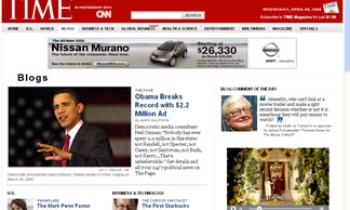On-demand is in demand. We are talking newspapers here. Most popular in the hospitality industry, this facility lets a guest use his credit card to pay for a newspaper of his choice, print it, and read it instantly. The amazing thing about the newspaper on-demand technology is that geographical location does not matter.
Whether you are in the US, UK or India, just print your favourite newspaper, which could perhaps be a little smaller than a broadsheet, and read it, provided it is part of the network! You pay anything from $1 to $3, for reading a newspaper hot from the printer. And sometimes, you get to read the paper before it’s printed in the press, according to an industry insider.
Although the trend has caught up in India only recently, Atlanta Olympics way back in 1996 witnessed it in a big way for the first time. According to a story posted on CNN during the Olympic Games, "visitors were getting a taste of a new digital satellite technology that puts international newspapers in the hands of hometown readers far from home".
PressPoint was making 15 international newspapers available at the Centennial Olympic Park, and it had plans to expand and set up distribution points in hotels, airports and train stations around the world.
This is how it works. There are PressPoint’s computers. Each day, newspapers download their final editions via satellite to the computers. When a customer wants to buy a paper, it’s ready to print out on demand. "Within a minute, the reader can have his copy of the South African Times, for example," the company spokesperson is reported to have said.
Basically, the product gives newspapers another vehicle to use for distributing their information. Particularly when several newspapers are seeing a drop in circulation in the West, an alternate distribution system is seen a way to attract and hold readers.
Cut to 2004, and the number of newspapers available on demand around the world has grown to over 100. Take for instance, Netherland-based Satellite Newspapers (www.satellitenewspapers.com), a global distributor of digital newspaper editions from publishers around the world. It recently announced the launch of its newspaper distribution concept in South Africa.
"Based on a distribute-then-print model Satellite Newspapers’ distributes the editions of 131 newspapers from 54 countries to a global network of newspaper-vending machines. These fully automated self-service newspaper-vending machines, marketed as Satellite Newspaper KiOSKS’, digitally print, on customers’ demand the latest edition of any newspaper of choice," according to the company.
Among the newspapers that are available in the network are International Herald Tribune, USA Today (USA), Die Welt (Germany), Le Monde (France), El Pais (Spain), and Komsomolskaya Pravda (Russia).
Satellite Newspapers was founded in 1999, and it developed a newspaper vending unit–Satellite Newspaper KiOSK. The KiOSK digitally prints the latest editions of newspapers, on-demand within just two minutes. It uses proprietary software and a private multicast satellite network, and receives payments via worldwide-accepted credit cards, according to the company website. "Through a secured virtual private network, these payments are sent to a central clearinghouse and processed on a daily basis," it added.
The system is capable of transferring digital files throughout the world. And while it is a global distributor of content in any print or digital format, the company has its obvious advantage. That is, "it brings to the world the convenience of digital speed, coupled with the familiarity of print," as the company puts it.
There are several other players in this space, including Pepc and NewspaperDirect. For example, NewspaperDirect is an Alley start-up, aiming to deliver same-day copies of international newspapers on demand at luxury hotels and research facilities around the world. The print-on-demand newspaper delivery firm said it would spend more on expansion overseas and for sales and marketing support for licensing partners.
The company partners with big media companies, to beam newspapers digitally to hotels. The on-demand newspapers are printed on high-speed stations at about two thirds the size of traditional broadsheets and sent to subscribers.
And how do the media companies get paid? According to the circulation, it appears. The company collects about $2-$3 per newspaper to hotels, which are free to determine their own charge to guests. The print stations, which includes high-tech printers, is installed at hotels, cruise ships, airlines, libraries and research facilities by NewspaperDirect. The company’s network of newspapers includes The Wall Street Journal, International Herald Tribune, USA TODAY, El Pais, The Times of London, Il Giornale, Dong-A Ilbo, Aftenposten, La Stampa, National Post and Sueddeutsche Zeitung.
As for the expenses involved, experts say the print stations would cost around Rs 5-6 lakh. But, that alone won’t do. For, the organisation installing the facility needs at least a 2 magabyte line. Plus, a royalty system between the participating newspaper companies must be put in place.









